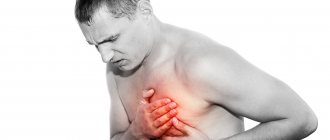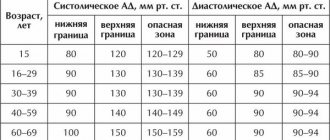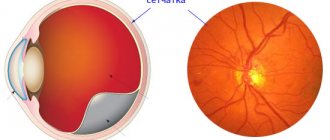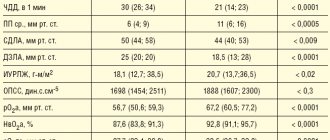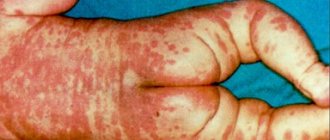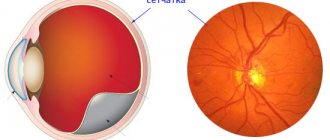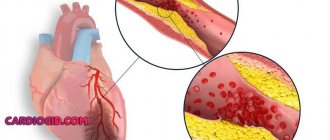Heart neurosis is one of the disorders that is characterized by pain or other discomfort in the heart area. But during examinations, no deviations from the norm in the functioning of the cardiovascular system are revealed. This is due to the psychosomatic origin of neurosis. That is, the problem is 100% psychological. And if there are no indications for heart treatment, you should consult a psychiatrist. In the international classification, the disorder has its own code F45.30 and is treated with a special technique. It is almost impossible to do this at home.
Heart symptoms
With cardioneurosis, the main discomfort for patients comes from attacks of pain in the heart. Their intensity varies, as does the duration, which varies from 15 minutes to 2-3 days. An attack occurs mainly after stress. Its frequency is individual in each case. Suspicious people can experience discomfort 5 times a day. Other patients suffer from attacks of heart pain only 1-2 times a year due to nervous exhaustion.
Patients remember the manifested pain in the heart well and begin to worry greatly about their condition. The situation reaches the point of an obsession about imminent death. Cardiologists and therapists have to deal with particularly suspicious patients. Doctors try to explain to the patient that no organic lesions have been identified and recommend contacting a psychotherapist.
It is problematic to draw an overall clinical picture, since patients describe their condition in different ways. We have to focus on the most common cardiac symptoms of cardioneurosis:
- aching and throbbing pain combined with increased sensitivity of the skin on the part of the heart;
- feeling of emptiness in the chest;
- pain throughout the left half of the body with a focus in the heart area;
- pain radiating to the back, head, neck and genitals;
- pressing sensation in the chest;
- stabbing and cutting sensations in the chest, preventing deep breathing.
Pain in the chest is not relieved by Nitroglycerin tablets and other cardiac medications and decreases only after rest. You can distinguish an attack of cardioneurosis from heart disease by the following nuances in the patient’s behavior:
- When describing the symptoms of heart neurosis, the patient tries to embellish it and each time the story changes a little.
- An attack of cardioneurosis causes a person to have obsessive thoughts about imminent death and the “severity” of cardiac pathology. He becomes overly concerned about his health and often experiences panic attacks.
- An attack causes a person to fuss excessively, actively gesticulate, alternately apply cold and heat to the chest, and take all kinds of heart medications.
People who actually suffer from diseases of the cardiovascular system behave with restraint. They can take the medication recommended by the doctor and call an ambulance if necessary. With neurosis, a person is excessively fussy, which reveals his real illness. Calling an ambulance during an attack is often provoked by obsessive thoughts. Visiting doctors must distinguish real cardiac pathology from a panic attack and advise how to treat cardiac neurosis.
Manifestation of heart neurosis
Symptoms of the disorder:
- Insomnia ; - Shortness of breath even in the absence of physical activity; - Pain in the heart area; - Increased sweating; - The emergence of panic fear of possible death due to cardiac arrest.
Apparent heart pain will change in the nature of its manifestation. At one moment there will be sensations of squeezing and squeezing, and at another moment there will be sharp colic on the left side of the body. Often people with cardiac neurosis report that they feel cardiac arrest for some time. Of course, this is a somatic sensation that has nothing to do with reality.
It is almost impossible to solve this problem without contacting specialized psychiatrists. Sooner or later, a person experiences panic attacks, stops getting enough sleep, and tries to find a solution to the problem by self-medicating or turning to healers and magicians. All this poses a danger to the mental state.
General clinical picture
The cardiac symptoms of cardioneurosis worry patients most of all, but other manifestations are also characteristic of the disease. Their intensity varies depending on the individual characteristics of the person. General symptoms of cardiac neurosis during an attack are usually the following:
- a feeling of anxiety that develops into panic;
- obsessive thoughts (obsessive syndrome) about imminent death and the development of fatal pathologies;
- feeling of a lump in the throat;
- lack of oxygen;
- frequent shallow breathing;
- feeling tired even with the slightest overload;
- inability to take a deep breath;
- headache;
- excessive sweating;
- alternating sensations of heat and cold throughout the body;
- loss of consciousness or faintness.
After the attack ends, the person feels a loss of strength and drowsiness. Heavy thoughts appear in your head that prevent you from falling asleep at night.
What is cardioneurosis
Pressing or stabbing pain behind the sternum, a feeling of lack of air, tachycardia, fear of death, severe weakness, fainting, all of this refers to the main symptoms of acute coronary syndrome (angina attack or myocardial infarction).
However, when examining a patient by a doctor, only severe tachycardia is detected, and also, in some cases, a systolic murmur at the apex of the heart and arrhythmia are heard. When conducting an electrocardiogram, echocardiography, Holter monitoring , etc., no significant deviations are detected. Even tachycardia and arrhythmia detected at the time of an attack disappear after a while and are not always recorded on the ECG.
At the same time, the pain, shortness of breath and other symptoms that the patient experienced were really strong and similar in intensity to the clinical picture of acute coronary syndrome. That is, there are complaints, but the examination shows that the person is healthy.
This paradox is typical for cardioneuroses and panic attacks.
Attention. During the collection of anamnesis, as a rule, it turns out that before the attack occurred, the patient experienced emotional overstrain, fear or stress. Such patients are not “malingerers” and they really require qualified medical care. However, their treatment should not be carried out by a cardiologist, but by a neurologist, psychologist or psychiatrist.
Panic attack and cardiac neurosis are often observed in young, emotional patients with a tendency to hypochondriacal and depressive disorders. They can also be observed in children during puberty (due to hormonal imbalance), students during exams, pregnant women, etc.
What is cardiac neurosis
Cardioneurosis is a functional pathology of the cardiovascular system, which is of a psychosomatic nature.
Important. Heart neurosis differs from true cardiovascular diseases in that it is not accompanied by organic disorders.
That is, the symptoms of cardioneurosis are associated with temporary functional disorders (tachycardia, arrhythmia, shortness of breath, etc.) arising from nerves. Panic attack and cardiac neurosis often follow each other. The patient's story about complaints has a pronounced emotional overtones.
- How to treat laryngeal neurosis
In this case, organic lesions characteristic of atherosclerosis, coronary artery disease , heart attack or other cardiovascular diseases (myocardial damage, tissue ischemia, narrowing of the lumen of blood vessels, hemodynamic disorders, severe lipid balance disorders (sharply increased “bad” cholesterol ), etc.), with full examination does not reveal.
Attention! Despite the fact that the first attacks of cardiac neurosis are not associated with organic diseases of the cardiovascular system, frequent attacks of cardiac neurosis can increase the risk of their development.
Therefore, after a full examination and exclusion of cardiac pathology, patients with cardiac neurosis are referred for further treatment to a psychologist, psychiatrist or neurologist (depending on the severity of the neurosis, panic attacks, depression and attacks of cardiac neurosis).
Causes
The development of cardioneurosis is influenced not only by external factors, but also by internal ones. A full list of reasons can be seen below:
- hormonal surges associated with illness, adolescence, pregnancy, menopause, taking medications;
- long-term course of pathology without improvement;
- constant feeling of stress;
- insomnia;
- frequent physical and mental overload;
- intoxication due to the effects of chemical compounds on the body;
- bad habits;
- poorly designed diet.
In childhood, the cardiac type of neurosis occurs against a background of stress during school or due to quarrels in the family, parental divorce and other factors that negatively affect the fragile psyche. In adolescence, the reasons remain the same, but the situation is aggravated by hormonal changes.
Causes of development of cardioneurosis
Cardioneurosis may be preceded by an accelerated fast pace of life, the presence of bad habits, the presence of a traumatic situation in the past, short-term and prolonged stress, depression, personality traits with anxious, psychosthenic and hypochondriacal accents. All these factors can influence the appearance of cardioneurosis in a person. Sometimes there may simply be manipulation to obtain secondary benefits.
Cardioneurosis is not easy to diagnose, since the disease has similar symptoms that are observed with angina pectoris or hypertension. That’s why it’s so important to undergo a thorough examination by somatic specialists before making hasty conclusions about your health!
First aid
The manifestation of cardioneurosis is difficult to predict, especially if a person has not previously experienced such discomfort. You can find out how to get rid of an attack of heart neurosis from the information below:
- During an attack, it is better for the patient to find a well-ventilated room to compensate for the lack of oxygen.
If possible, it is advisable to lie down on a sofa or bed. If they are missing, the floor will do.- Take any mild drug with a sedative (calming) effect (Valocardin, alcohol tinctures of motherwort, lemon balm, valerian).
- Take your pulse. If it can be easily felt and does not malfunction, this means that there are no severe functional impairments.
- Calm down and lie down, trying not to think about anything. Excessive fuss, constant measurements of pressure, pulse and calls to relatives and friends will only increase anxiety.
Relief occurs in about 15-20 minutes. To prevent further attacks, it is advisable to consult a therapist. He will send you for an examination and, based on its results, will draw up a list of recommendations. Drug treatment is required only in severe cases. In most cases, you can get by with lifestyle correction and traditional medicine. If the pain in the heart does not go away or the patient is in a pre-fainting state, then it is necessary to call an ambulance.
Diagnostic methods
Vegetative-vascular dystonia is an exception diagnosis. This means that it is placed after a complete examination of the cardiovascular and nervous systems, if no abnormalities are found in them.
For diagnosis, you need to contact a general practitioner, who, if necessary, will refer you to a cardiologist, neurologist or endocrinologist. In order for a doctor to make an accurate diagnosis, it is necessary to accurately describe the symptoms and the time of their onset. The therapist will definitely clarify whether the patient drinks alcohol, nicotine, how often he drinks coffee and what daily routine he follows. This data is necessary to correctly make recommendations for the treatment of the disease.
To diagnose vegetative-vascular dystonia, the following methods are used:
- laboratory diagnostics - general blood and urine analysis without specific changes, in biochemical analysis the lipid ratio may be disturbed;
- blood test for hormones - a study of thyroid hormones is indicative; if they increase, tachycardia and weight loss may be observed;
- ECG - changes are not typical for VSD, sometimes it is possible to record tachycardia, single extrasystoles, but there are no signs of severe conduction disturbances in the heart;
- EEG - electroencephalogram can reveal slight deviations in the conduction of impulses in the brain;
- Ultrasound of internal organs - examination of the abdominal cavity in case of complaints of indigestion, examination of the heart, kidneys, and pelvic organs in women.
Dysfunction of the nervous system is not accompanied by damage to internal organs; most indicators are within the normal range, despite complaints of poor health.
Drug treatment
Drugs are prescribed to relieve pain, normalize heart rhythm, relieve shortness of breath and calm the nervous system. The following groups of medications are mainly used:
- It is advisable to use sedative medications for a course lasting at least 1-2 months to obtain a lasting effect. Alcohol tinctures of herbs (motherwort, peppermint, valerian) and medications with a sedative effect (Valocordin, Validol, Persen) are used.
- Antidepressants (Pyrazidol, Amitriptyline, Imizin) suppress depression, improve mood and stimulate the nervous system. Initially, they often cause drowsiness due to the strong sedative effect, but the side effect gradually wears off.
- Tranquilizers (Seduxen, Phenazepam, Nitrazepam) relieve nervous tension and eliminate anxiety and fear. If the patient is more concerned about phobias that arose against the background of an attack of cardioneurosis, then it is better to take Seduxen. Nitrazepam effectively helps with insomnia, and Phenazepam is used to suppress depression.
- Associated headaches can be eliminated with analgesics (Citramon, Spazgan, Drotaverine).
- Vitamin complexes with a high concentration of B vitamins (“Neurovitan”, “Neuromultivit”) are used to improve the condition of the nervous system.
Potassium-containing drugs (Asparkam, Orocomag) are used to stimulate the conductive function of the heart and normalize the transmission of nerve impulses.
Vitamins, potassium-containing preparations and alcohol tinctures with a sedative effect can be taken without any particular concern. For chemical-based analgesics and sedatives, it is necessary to study the contraindications. It is prohibited to take antidepressants and tranquilizers on your own. They have a strong effect on the nervous system, so they are sold by prescription.
The exceptions are children under 18 years of age and women during pregnancy and breastfeeding. For these groups, drug therapy is selected only by the attending physician, who, after the examination, will tell you how to treat cardiac neurosis and advise safe methods. In other cases, you can self-medicate only at your own peril and risk.
Types of neurotic disorder
All neuroses go through 3 stages . The first of them lasts 1 month and is characterized by acute mental trauma. If its consequences were not noticed in time, then the process develops, certain reactions appear and awareness of one’s “abnormal” state occurs. When the disorder lasts from six months to 2 years, they speak of its second stage.
If the disease is not eradicated in the first two stages, it becomes a chronic disorder with persistent changes in the personality structure.
There are three most common types of neurosis : neurasthenia, obsessive-compulsive neurosis and hysteria.
The main symptoms of neurasthenia are exhaustion and increased fatigue against a background of irritability and hyperexcitability. Other symptoms may also occur: increased sensitivity to bright light, temperature changes, loud conversations. Autonomic disorders also appear: tachycardia, increased sweating, headaches. It is difficult for the patient to concentrate and tune in to any activity.
Hysteria is a type of neurosis that is nicknamed the great malingerer for the variety of its symptoms. The hysterical type of character contributes to its development.
Among the manifestations of the disease are attacks of suffocation, sobbing or laughter. It can masquerade as a hypertensive or cardiac crisis. There is temporary immobility and loss of sensation in the limbs. Neurotic deafness and blindness rarely occur.
Probably the most well-known symptom of the disorder is an attack of hysteria. With it, a person faints, but, surprisingly, very successfully. Convulsive-like seizures may occur. Patients wave their arms, “killed” by suffering, their body bends into an arc. Such an attack is demonstrative in nature. Women are more often susceptible to them.
Despite the depressing, painful symptoms, patients do not strive to get rid of this condition. On the contrary, they skillfully manipulate it. Whenever there are any complaints against them, they refer to their “serious” illness. As a rule, such individuals are demonstrative and self-centered.
Be careful: hysteria can be contagious! This was proven by a case in one of the schools in Tanganyika. The three girls laughed so contagiously that their laughter was echoed by 95 students. The maximum duration of the attack was 16 days. This school was closed, but 14 more schools took up the baton. In total, about a thousand students suffered a hysterical attack. Poor living conditions of the hostel in which they lived and the inability to make a claim are considered a possible cause of hysteria among the girls.
Obsessive-compulsive neurosis is another form of the disease in which certain thoughts, actions, and fears become so intrusive that a person perceives them as painful, they interfere with his usual way of life.
Among the most common phobias are fear of death, fatal disease, heights, confined spaces, and others.
Fears can also provoke obsessive actions. Thus, individuals strive to constantly wash their hands so as not to “catch any infection”, disinfect everything around them, and avoid public places.
Compulsions can also occur on their own. For example, there is an uncontrollable desire to swear or do something illegal.
The famous inventor Nikola Tesla suffered from obsessive-compulsive disorder. His mania reached the point where he could count steps, cups of coffee or pieces of food. He was terrified of germs, which is why in a hotel he demanded that towels be changed up to 18 times a day, and in a restaurant, if a fly landed on the table, he demanded that it be reserved. The hotel room had to be a multiple of three.
Non-drug therapy
Treatment of cardioneurosis is possible without pills. The essence of non-drug treatment is lifestyle correction:
- try not to get into stressful situations;
- maintain a positive attitude;
- work no more than 7-8 hours a day and take 5 minute breaks once every hour and a half;
- devote at least 6-8 hours to sleep;
- do not overwork physically and mentally;
- walk in the fresh air for 1-2 hours every day;
- exercise (moderately), do morning exercises;
- give up bad habits (smoking, drinking alcohol).
Gymnastics for cardioneurosis should be moderate and aimed at strengthening the heart muscle. Running, swimming and aerobic exercise are good options.
The patient will have to change his diet to get rid of heart neurosis. By giving up fast food, sweets, spices and other unhealthy foods in favor of healthy foods, you can significantly improve your overall health. The daily menu should include more vegetables and fruits. It is advisable to eat at least 4-5 times a day, in small portions. The last meal should be 3-4 hours before bedtime.
People who spend most of their time working need to dilute their busy schedule. You should rest at least 2-3 hours a day, doing your favorite hobby, listening to music or going to a massage.
How are neuroses treated?
Treatment of neuroses is primarily carried out with the help of psychotherapy . This is the main tool in overcoming the disease, which cannot be replaced even by medications.
But initially, the impact of the psychotraumatic factor should be canceled. This can be done in two ways:
- the first is to eliminate the situation;
- the second - as in the saying: “If you cannot change the situation, then change your attitude towards it.” This is what psychotherapy does.
There are two types of psychotherapeutic methods: primary and auxiliary.
Basic psychotherapy is aimed at eliminating the cause of the disorder. The auxiliary method enhances the effect of the main one and consolidates the result. Psychotherapy using purely auxiliary methods is ineffective. Among psychotherapeutic methods, special attention is paid to cognitive behavioral therapy. It is especially effective in the treatment of obsessive neuroses. A technique is used that provokes the client to have obsessive thoughts or actions. It is believed that in this way a person will get used to them, and they will cease to have a frightening character. In addition, this technique allows you to escape from obsessions.
To eliminate anxiety, behavioral therapy uses methods to help change incorrect attitudes, as well as methods of coping with stressful situations. To get rid of phobias, a person is deliberately immersed in a frightening situation. For example, if he is afraid of public speaking, he is forced to give a lecture or report to a group of people.
Other types of psychotherapy are also used:
- existential;
- Gestalt therapy;
- hypnosis;
- art therapy;
- interpersonal therapy;
- psychoanalysis;
- auto-trainings.
Drug treatment of neurotic disorders reinforces and enhances the positive effect of psychotherapy. The following groups of drugs are used:
- Antidepressants are drugs for normalizing mood and eliminating anxious, depressing symptoms. They can be either chemical or plant based. They are able to stop even deep forms of the disorder;
- tranquilizers - there are several classes of such drugs. Some of them are used to eliminate mild neurotic symptoms, while others fight the most obvious manifestations of the disease. Tranquilizers are prescribed in cases where neurosis is accompanied by fears and anxiety;
- neuroleptics are effective for the hysteroid form of the disorder;
- mild depression can be eliminated with herbal remedies and infusions.
Other groups of drugs used for the treatment of nervous disorders include complexes of vitamins and minerals, adaptogenic agents based on Eleutherococcus, ginseng, Rhodiola rosea, sedative herbal preparations and sleeping pills.
Physiotherapeutic procedures include:
- massage;
- water and mud therapy;
- electrosleep;
- Darsonvalization.
symptomatic therapy becomes an additional treatment method . It eliminates negative signs that arise in a particular organ. Such drugs can be painkillers, as well as drugs that improve digestion, mild heart medications, and “distraction” tablets - Validol.
For help in the treatment of neuroses, you can contact the Moscow City Psychoendocrinological Center.
Psychotherapy
Taking medications alone can stop the manifestations of the disease, but cannot eliminate its cause. To completely cure cardioneurosis, you will have to normalize the functioning of the nervous system with the help of a psychologist or psychotherapist. Communication with a specialist will eliminate the feeling of anxiety, clear your head of obsessive thoughts and strengthen your psyche to effectively resist panic attacks.
Specialists mainly use the following methods of psychotherapy:
- Rational treatment. The doctor helps the patient understand why attacks occur and then teaches him how to effectively deal with them.
- Cognitive behavioral therapy. During the conversation, the psychotherapist talks about the patient’s actions that provoke the development of cardioneurosis and points out his mistakes in order to prevent their recurrence in the future.
- Family sessions. You can come to a conversation with a specialist with close people with whom the patient spends most of his time. Family psychotherapy is most effective for treating couples and children. During the sessions, the doctor will learn about problems and recommend methods to eliminate them.
- Hypnosis is used if the patient is unwilling or unable to share the hidden reasons for his condition. The specialist will put him to sleep and learn about all the problems on a subconscious level.
To achieve noticeable results, it usually takes about 10-15 sessions. It is advisable to combine them with lifestyle correction. The doctor will recommend drug treatment if necessary.
Neurotic disorder in children
Neuroses in children are quite common, and more often in boys than in girls. Sometimes their manifestations are difficult to mistake for symptoms of a disease. These are obsessive actions such as pulling out hair, picking your nose with your finger, pulling your earlobe, biting your lip, or sucking your fingers. Childhood neurosis can also manifest itself as compulsive counting. The child counts anything: steps, letters, squares of tiles, but he himself cannot give an explanation why he is doing this.
Other neurotic symptoms include:
- nervous tics - the child seems to wink, shrug his shoulders, stutter;
- fear reaching the point of panic. It is especially noticeable before bedtime. This could be the fear of going to bed, being alone, fear of the dark, fear of going to school;
- hysterics with fits and screams occur when the child’s wishes are not fulfilled;
- urinary incontinence.
Children with neuroses are lethargic, have poor appetite, and suffer from insomnia.
The cause of this condition is very often conflicting relationships in the family, especially the divorce of parents. Another group of provoking factors is a stressful situation accompanied by severe fear: a dog has bitten, a child has witnessed an unpleasant situation. The cause may also be fatigue, both mental and physical.
Other causes include past infections, intoxications, and damage to brain cells.
A child psychiatrist treats children's neurotic disorders. The main method of treatment is still psychotherapy. The following types are used: fairy tale therapy, play therapy, hypnosis. Medications are also used. These are mainly nootropic and restorative drugs, vitamin-mineral complexes, and sedative herbal remedies. Tranquilizers and antidepressants are used extremely rarely.
Parents are required to create a warm and friendly atmosphere in the family for their child. The daily routine should be distributed in such a way that there is enough space for both work and rest. It is very important to moderate your child’s presence on the Internet and be sure to involve him in some kind of sport.
Folk remedies
Folk remedies help with the treatment and relief of symptoms of heart neurosis. In most cases, herbal teas with a sedative effect are used. They actually have no contraindications, except for individual intolerance, but during preparation it is important to follow the dosages indicated in the recipe. If you exceed them or underestimate them, the effect will be too strong or completely absent. As a standard, 1-2 tbsp is taken for preparing the decoction. l. main ingredient per 500 ml of water or alcohol. Then the resulting mixture is thoroughly mixed and left to infuse.
The following folk remedies are the most effective for treating and relieving symptoms of heart neurosis:
- A decoction of mint and valerian roots calms the nerves well. You can prepare the medicine by taking 1 herb or both in equal proportions. It is taken instead of tea, 2 times a day.
- The combination of dried apricots, raisins and hawthorn, viburnum and rowan fruits will saturate the body with the microelements necessary for the normal functioning of the heart and nervous system. Prepare like a regular decoction. You can drink it instead of tea 2-3 times a day.
- Drink warm milk at night with the addition of 1 tsp. honey improves sleep and calms the nervous system.
The following fees can be used as a remedy for the treatment of cardioneurosis:
- mint, valerian roots, hop cones, three-leaf watch;
- hawthorn fruits, oregano, motherwort;
- hop cones, yarrow, valerian roots, lemon balm.
After preparing one of the decoctions, it should be taken 3 times a day, 100 ml. Course duration – 1 month. If allergy symptoms occur, treatment of heart neurosis with folk remedies is stopped, and you should consult a doctor as soon as possible.
start of treatment
Treatment of cardioneurosis in our center begins with an appointment with a vertebroneurologist. The initial appointment is conducted by the candidate of medical sciences, chief medical doctor Lyudmila Ivanovna Mazheiko.
At the appointment, the vertebroneurologist will conduct a comprehensive diagnosis: examine cerebral blood flow, examine heart function under different types of stress, and determine the nature and degree of nervous system disorders.
Based on the examination, the doctor will develop an individual treatment plan.
Appointments with a vertebroneurologist are carried out by appointment. To begin treatment, make an appointment.
Forecast
Cardioneurosis is successfully eliminated in the early stages. Residual effects and relapses do not occur with an integrated approach to treatment.
In its advanced state, the disease has a detrimental effect on the patient’s psycho-emotional background. He becomes suspicious, overly irritable and fearful. A constant feeling of anxiety negatively affects all internal processes. Basically, the stool is disrupted, hypertension and angina develop. Treatment will be aimed at reducing nervous excitability and stabilizing the digestive and cardiovascular systems.
Cardioneurosis is a psychosomatic disease. Its development is provoked by frequent stress and overwork. The main problem arises in the diagnostic process. To differentiate cardiac neurosis, the therapist will have to exclude all similar pathological processes. After successful diagnosis, the patient is given recommendations for lifestyle correction. In advanced stages, medication may be prescribed. Psychotherapy and folk recipes are successfully used to complement the course of treatment.
What is the diagnosis based on?
The diagnosis is made by a neurologist or psychiatrist. The specialist interviews and examines the patient and conducts a psychological examination.
It is very important to exclude somatic diseases when diagnosing neurosis, because many of its symptoms are similar to manifestations of pathologies of internal organs. For this, the patient is prescribed a series of laboratory and instrumental examinations: ultrasound, X-ray, CT, MRI, vascular examination, esophagogastroduodenoscopy (EGD).
After excluding such diseases, differential diagnosis is carried out with other mental illnesses: psychopathy, schizophrenia, manic-depressive disorder. An important assessment criterion is the person’s awareness of his illness and the desire to get rid of it.
Diagnosis of the disease
Symptoms of cardioneurosis overlap with signs of diseases of other internal organs. Only with the help of differential diagnosis can angina pectoris, myocarditis, functional malfunctions of the thyroid gland, osteochondrosis, and other serious diseases be excluded. To obtain an accurate diagnosis, the cardiologist will prescribe the following tests:
- heart using the electrocardiographic method (ECG);
- cervical and thoracic spine radiographically;
- thyroid gland using ultrasound;
- blood for sugar and hormone levels.
In addition, 24-hour Holter monitoring with blood pressure control may be necessary.
It is very important to examine the patient, conduct a survey about the causes and symptoms of attacks, and the duration of the disease. Cardioneurosis is diagnosed if the following criteria are present:
- Recurrence of symptoms continuously or for three months.
- Direct connection of symptoms with hormonal imbalance or stress.
- Signs of disorders of the autonomic nervous system: low blood pressure, sweating of the extremities, chilliness, tachycardia, marbling of the skin.
After diagnosis, consultation on how to treat cardioneurosis in a patient, for treatment success, should be carried out in parallel by a cardiologist, therapist and neuropsychiatrist. The joint efforts of doctors will help develop the optimal treatment path.
